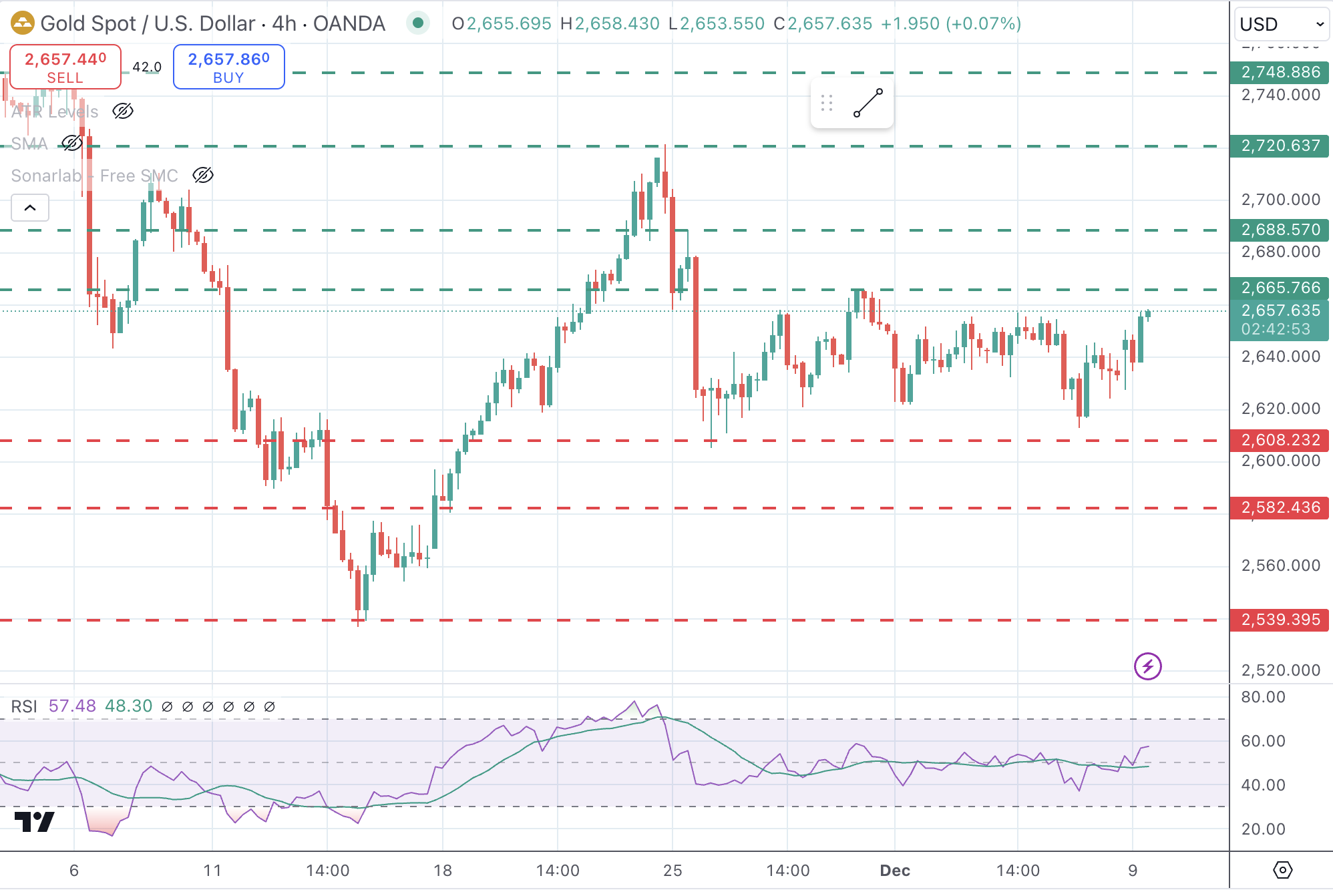提供最佳价差和条件
 了解更多
了解更多
Gold price (XAU/USD) nudges higher on Monday’s early European session, favoured by its safe-aven status amid the increasing uncertainty in the Middle East after the fall of the Bashar al-Assad regime in Syria.
Beyond that, The People’s Bank of China (PBoC) announced over the weekend that it resumed Gold purchases in November after a six-month pause, which is giving an additional boost to the precious metal.
Data from the US released on Friday revealed that the country’s labour market remains solid, but the increasing unemployment rate confirmed expectations that the Federal Reserve (Fed) would cut rates by 25 bps next week. This, and a mild risk appetite, are keeping US Dollar upside attempts limited.
Gold is showing an increasing bullish momentum on Monday as the positive trend from last week's lows gathers steam. With fundamentals in its favour, the pair seems likely to retest the top of the last two weeks’ channel at $2,665.
Above here, the next target would be the $2,690 intra-day level, and the November 24 high, at $2,720. On the downside, the bottom of the mentioned channel is at $2,620. Below here, the next support is the November 25 low, at $2,605.

Gold has played a key role in human’s history as it has been widely used as a store of value and medium of exchange. Currently, apart from its shine and usage for jewelry, the precious metal is widely seen as a safe-haven asset, meaning that it is considered a good investment during turbulent times. Gold is also widely seen as a hedge against inflation and against depreciating currencies as it doesn’t rely on any specific issuer or government.
Central banks are the biggest Gold holders. In their aim to support their currencies in turbulent times, central banks tend to diversify their reserves and buy Gold to improve the perceived strength of the economy and the currency. High Gold reserves can be a source of trust for a country’s solvency. Central banks added 1,136 tonnes of Gold worth around $70 billion to their reserves in 2022, according to data from the World Gold Council. This is the highest yearly purchase since records began. Central banks from emerging economies such as China, India and Turkey are quickly increasing their Gold reserves.
Gold has an inverse correlation with the US Dollar and US Treasuries, which are both major reserve and safe-haven assets. When the Dollar depreciates, Gold tends to rise, enabling investors and central banks to diversify their assets in turbulent times. Gold is also inversely correlated with risk assets. A rally in the stock market tends to weaken Gold price, while sell-offs in riskier markets tend to favor the precious metal.
The price can move due to a wide range of factors. Geopolitical instability or fears of a deep recession can quickly make Gold price escalate due to its safe-haven status. As a yield-less asset, Gold tends to rise with lower interest rates, while higher cost of money usually weighs down on the yellow metal. Still, most moves depend on how the US Dollar (USD) behaves as the asset is priced in dollars (XAU/USD). A strong Dollar tends to keep the price of Gold controlled, whereas a weaker Dollar is likely to push Gold prices up.